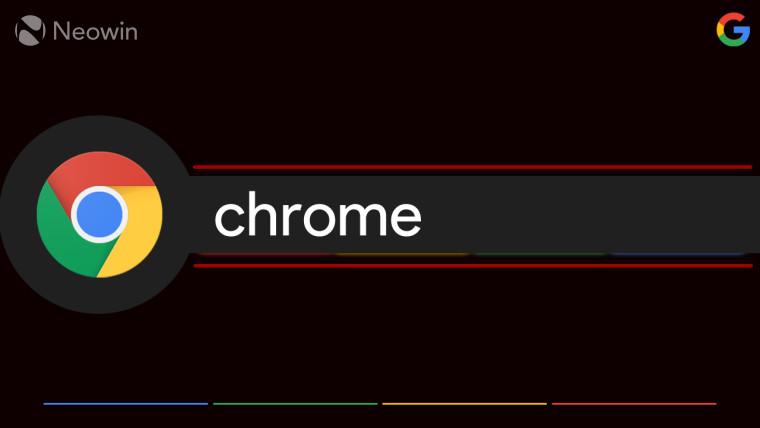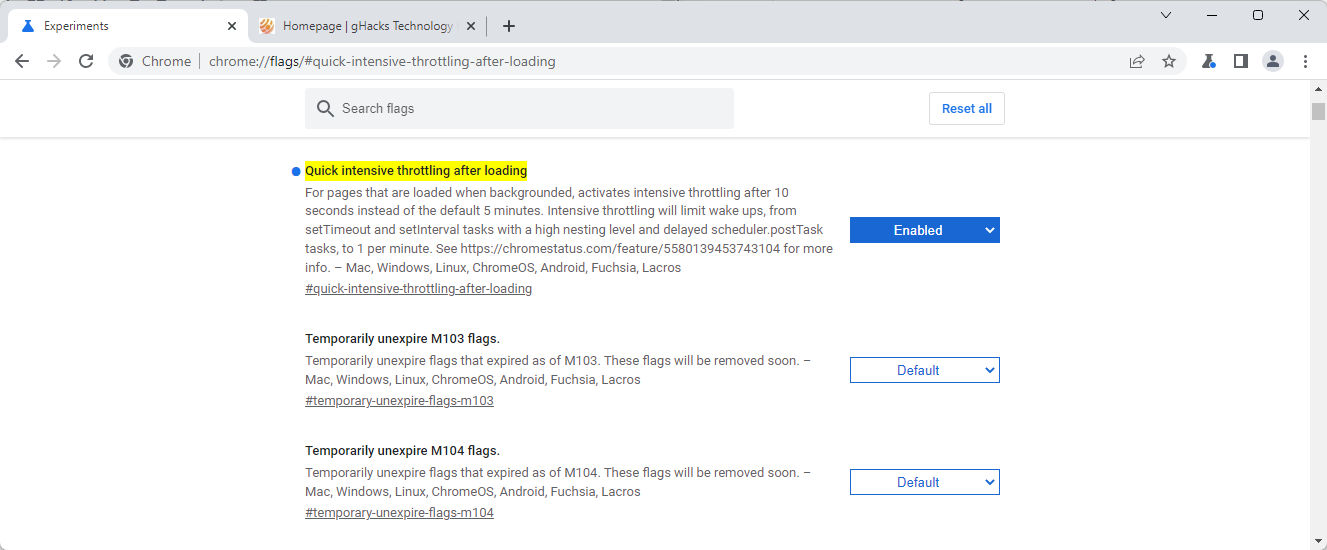- Aug 17, 2014
- 11,447
Energy efficiency is not the strongest point of Chrome (or any other Chromium-based browser), which is why developers are always looking for new ways and technologies to make Chrome consume less battery juice. A new experimental feature promises up to 10% battery improvements by limiting background JavaScript activities in pages running in the background.
Chrome users can check out the new experimental flag in Chrome Dev and Canary (version 105 and higher). Go to chrome://flags and enable the Quick intensive throttling after loading.

Here is how the feature works according to Google (via Chrome Unboxed):
For pages that are loaded when backgrounded, activates intensive throttling after 10 seconds instead of the default 5 minutes. Intensive throttling will limit wake ups, from setTimeout and setInterval tasks with a high nesting level and delayed scheduler.postTask tasks, to 1 per minute.
Google claims its internal testing revealed no significant regressions, but the experiment yielded positive improvements to CPU time, effectively reducing energy consumption and extending battery life. Still, the new flag remains an experiment and a work in progress, so Google will continue improving it before shipping it to the public.
Google plans to bring the new platforms to Chrome on all platforms, including ChromeOS. Users and developers can learn more about intensive throttling after loading in Google Chrome in the official documentation.

Google promises 10% better battery life in Chrome with a new experimental feature
Google Chrome received a new experimental flag that should bring notable battery life improvements. According to Google, quick intensive throttling after loading should improve battery life by 10%.

